Enregistrement, mixage et mastering
Publié le 31/05/2022

Let’s continue to talk about the recording techniques giving some more information about how to record drums. In this post we shall pay attention to the techniques used by Matteo Di Francesco in his tracking sessions.
Matteo is a musician with a strong experience for both live and studio situations. He grew up as a musician studying at the Conservatorio de L’Aquila and the Drummers Collective in New York. He has quite a big live experience with artists as well as orchestras and he played drums in many successful albums.
Just to mention a few, and being aware not to be complete, we can mention Fiorella Mannoia, Loredana Berté e Samuele Bersani among the albums while Ron, Tosca, Fiorella Mannoia (on RAI3, La versione di Fiorella), Francesco Baccini, Luce Social Club (on Sky Arte) and the Orchestra di Piazza Vittorio for live sets.

The last years experience suggests that a lot of recording sessions are taking place at the musician's studios.
This happens for both budget and practical reasons as the modern production workflow has been finding its pace in this direction. Last years events have even increased this trend.
The result is that musicians have to take care of the artistic part, the playing technique as well as of the technical part of the game.
Matteo is lucky enough to be also a sound engineering passionate. This is an advantage that helped him to build, over the years, its own tracking skills to make recordings being used in relevant albums of the italian discography.
He uses a soundproof box which is also acoustically treated. The box was built years ago according to the musician's specs. Further elements (bass traps and resonators) have been added over the years to improve resonances.
The box volume is enough to allow two drum sets to be installed at the same time with enough room for outboards and DAW.
Matteo uses the classic miking techniques:
Close mics: placed very close to the sources, these mics take care of the specific instruments sound and to minimize leaking.
Overhead: to catch the overall sound and to have a more present cymbal contribution.
Room: these mics are placed in a specific part of the recording environment to catch particular sound and room reverberations to help the sound liveness to come through.

The kick is tracked via three microphones. A Shure Beta 91, an AKG D12 and a subkick mic. The day we met this function was performed by an AKG 414.
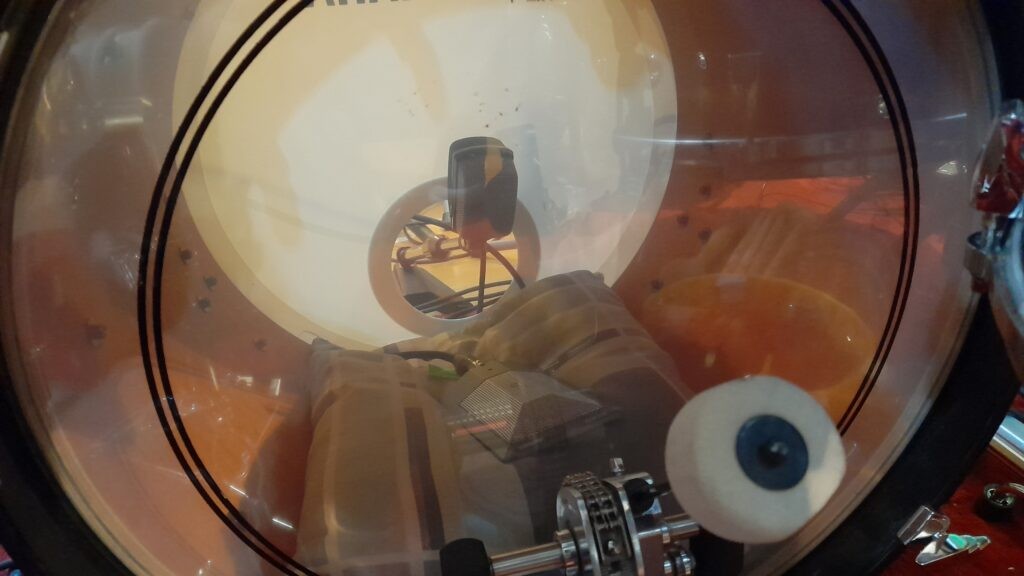
Shure and D12 are placed inside the drum (see the picture above). The 414 is placed outside, close to the resonant drum head ( see following figure)
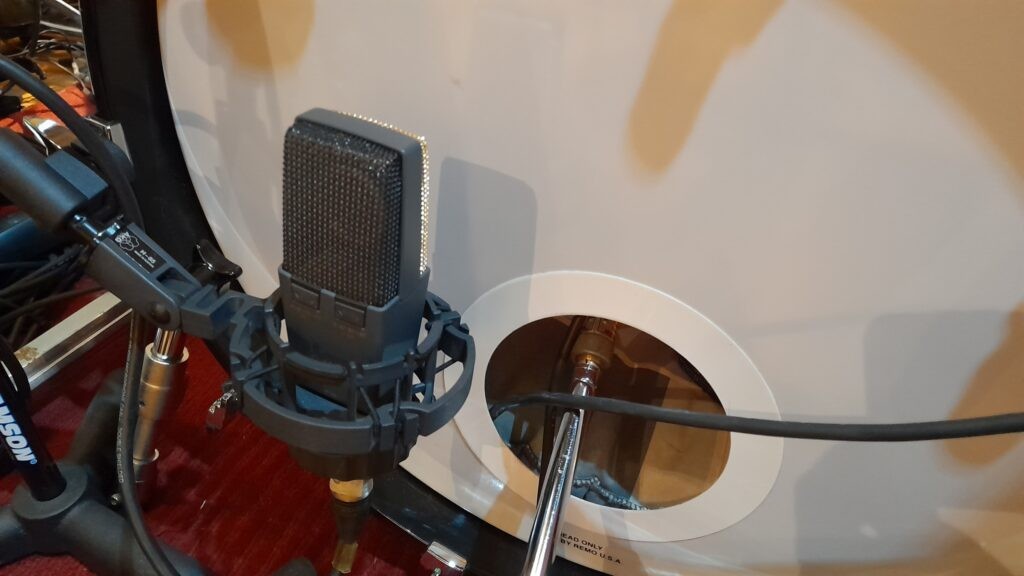
The snare drum head is picked via a Shure SM57 on the top and an AKG 214 for the bottom.
Toms and Floor Toms use Sennheiser MD421 dynamic mics.
For the Hi Hat there are three options according the specific need. We can have a modified Shure SM57, an AKG 451 or a Beyerdynamic M160.
The two overheads are Neumann U87. As stated before they pick the entire drum kit but have a special focus on the cymbals.
A ribbon Coles 4038 is used to pick the sound from a given position that Matteo defines to be the “acoustic center” of the set.
The role of this microphone is similar to the overhead one but here the focus is on drums.
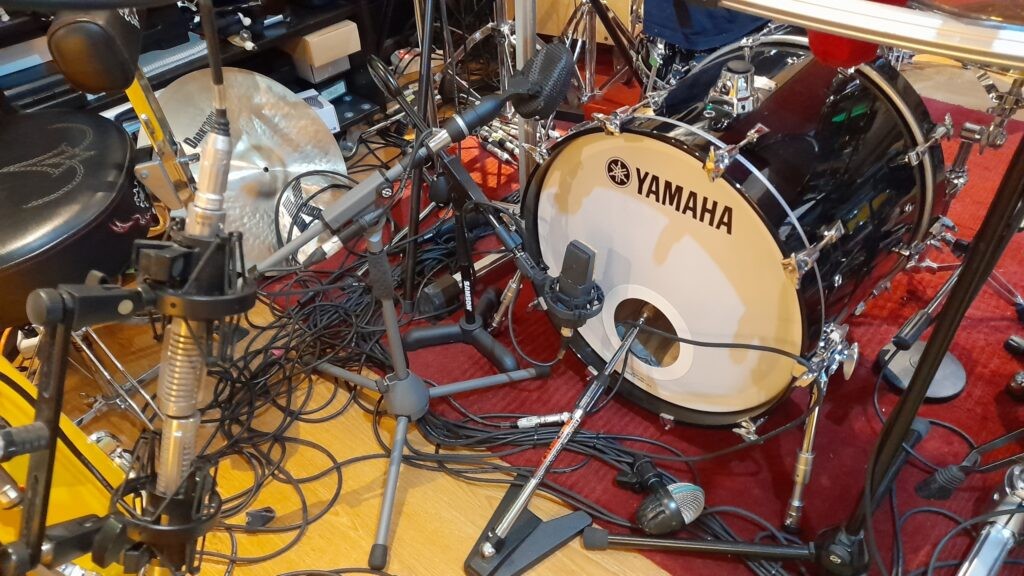
The room is picked in three different ways. On the far corners of the room we have two Brüel & Kjær 4006 (usually used as measurement mics).
These are helped by a couple of Royer Labs 121 in Blumlein configuration placed almost at the lower center of the room.A Mojave M301, moved where needed, is used to complete the arrangement.
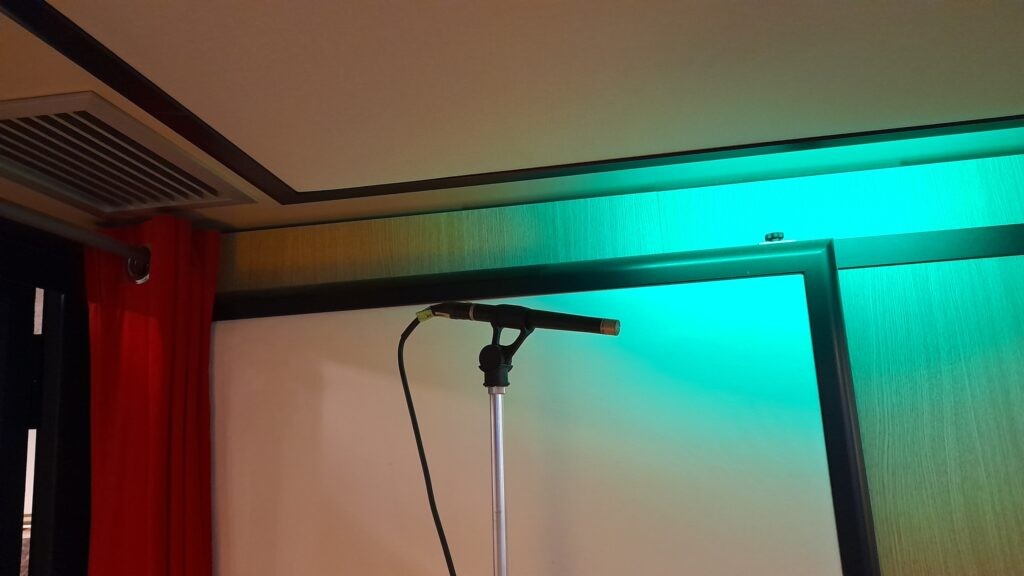
The mic signals get to the audio interface inputs (an UAD Apollo 16) passing through hi quality outboard. Matteo prefers to use hardware devices to push them and allow harmonic generation.
Plugins are anyway used where applicable and functional to the objective. The kick’s Beta 91 and subkick pass through their own API 512C and API 560 equalizers.
The D12 is processed by a Heritage Audio 7381 followed by an Empirical Labs Distressor and a plugin (UAD Distressor) to emulate an optical compressor. The approach is to select three frequency bands and blend them to build the final sound as if it was a multiband compressor.
The subkick is for the low frequencies, the D12 for the middle band and the treble band is cured by the Shure Beta 91.
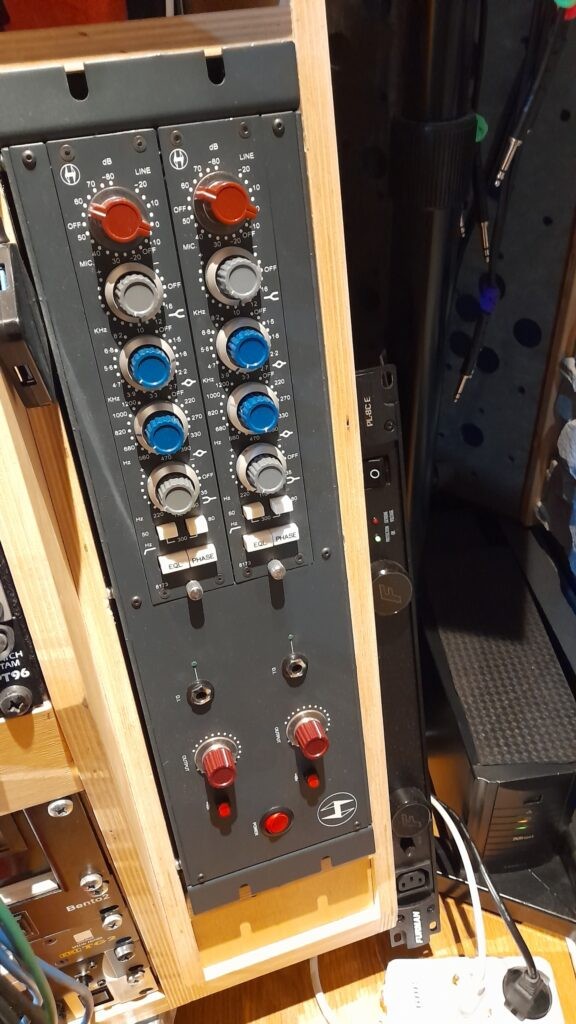
A second Heritage Audio 7381 is used for the snare drum head followed by a UAD 1073 equalizer (plugin).
Here blending top and bottom sound it is possible to get a sound with the required attack, body and tail suitable for the specific project.
The Tom’s 421s go into their Heritage Audio 1073-500.

The Hi Hat mics are served by API 312 preamps and processed by a frequency selective compression applied by the Pro Tools Channel Strip plugin). This is needed to minimize the bleeding of snare sound into the Hi Hat track.
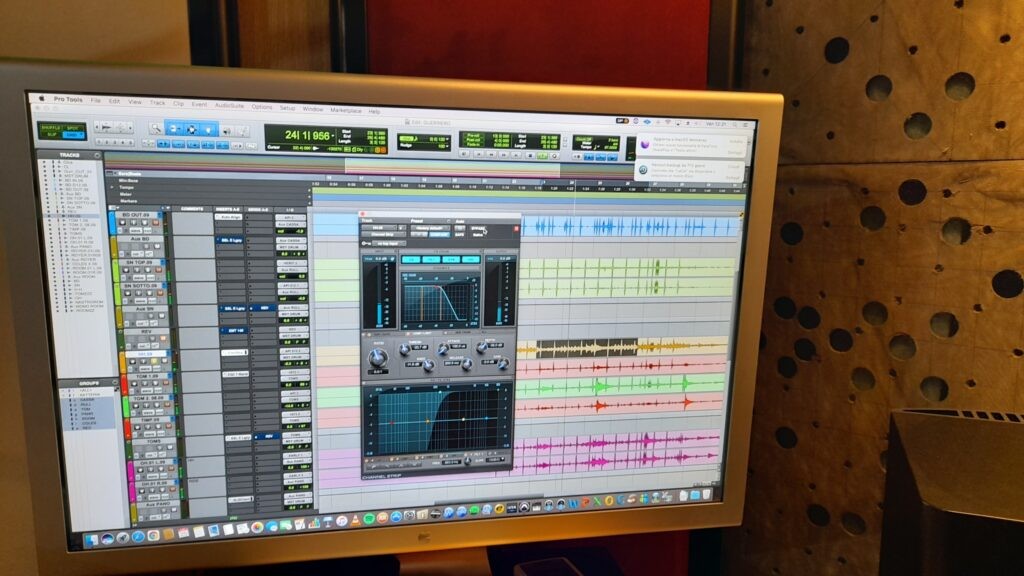
The U87s used as overhead go into an Early Bird di Thermionic Culture while the two Royers are processed via two SSL channel strips.

The Coles for the “acoustic center" goes into an API 312, an API 550B eq and a DBX165 compressor.
312 and 550B are also used for the Mojave room mic. The Brüel & Kjær 4006 are connected to two Chandler TG2 preamps and a dual mono Valley People compressor.
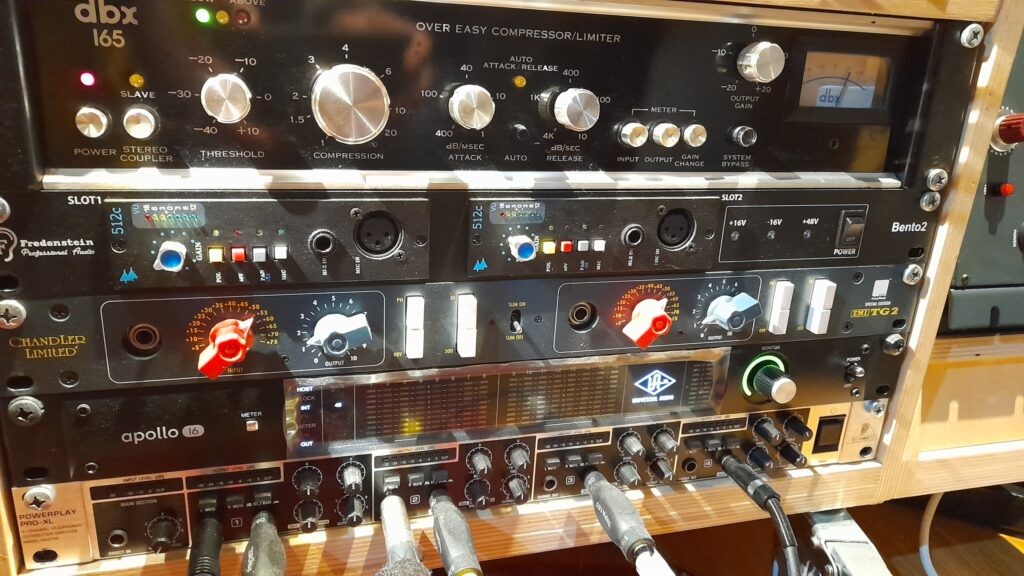
So, it seems clear as the used technology is a lot and the devices are all members of the pro class. Every single item has its role to create the final (good) result: a good starting sound, high quality carefully placed microphones, the channel strips and the capability of controlling the whole set.
Usually the tracks are given to the producer to be mixed without further processing. Sometimes kick and snare tracks are sent pre-mixed.
The producer and the mix engineer will be able to blend the sounds to adapt them to the whole song’s sound.
The results can be listened in the albums which have Matteo Di Francesco playing drums (check this out in the credits or in his resumée). We would finally thank Matteo for the collaboration and his availability to share with us the technical aspects of his profession.
Rejoignez-nous dès aujourd'hui et profitez de 5% de réduction sur votre prochaine commande !

Chariot vide